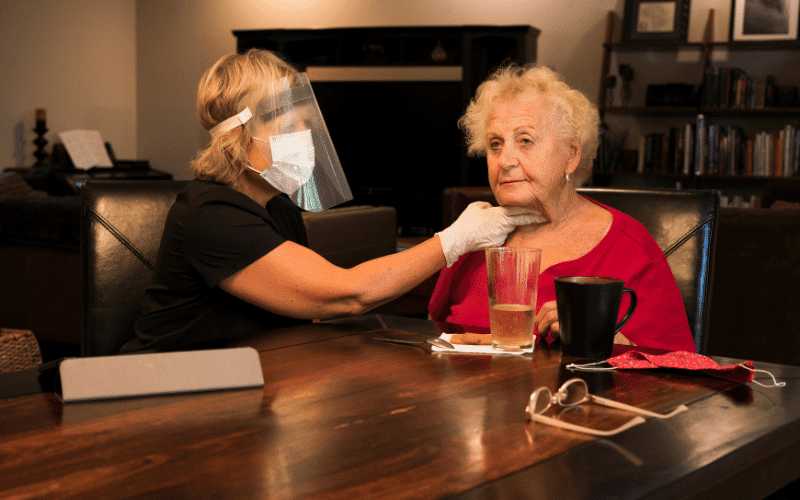Symptom 2. Dysphagia: The Battle with Swallowing

Life with PBP takes another twist when dysphagia, a term defining difficulties in swallowing, starts to make its presence known. Although swallowing is an automatic process for most of us, it turns into a conscious, often laborious task for those facing PBP. Meals, once a source of comfort and joy, can become a battleground, testing patience and resolve.
Imagine having to constantly think about each swallow, trying to make sure it goes the right way. Dysphagia can range from a slight delay in swallowing to a complete inability, depending on the individual and the progression of PBP. It’s an everyday challenge, underscoring the hardships associated with this condition.
Beyond mealtime struggles, dysphagia can lead to health risks such as choking or malnutrition. Because swallowing becomes problematic, the risk of food or liquid entering the lungs (aspiration) increases, potentially causing pneumonia. This implication of dysphagia underscores the broader health issues tied to PBP, transcending the disorder itself.
Living with dysphagia requires adaptations, often profound ones. Those affected may need to modify their diet, opting for softer or pureed food to mitigate the swallowing difficulties. And while it can seem daunting, it also opens doors to culinary creativity, illustrating once again how people with PBP can adapt and find joy amidst adversity.
Dysphagia is a multifaceted aspect of PBP, and understanding it helps us appreciate the battles those with PBP fight at every mealtime. It’s a sobering reminder of the often-overlooked privilege of swallowing, illustrating the immense resilience of those living with PBP. (2)